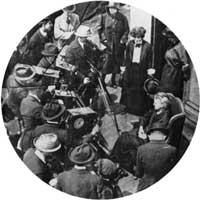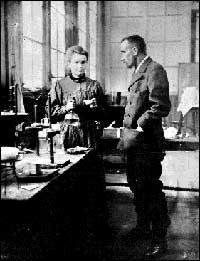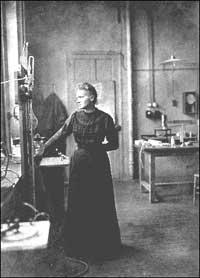Marie Curie, pioneer in science and society

Marie Curie (originally Marie Sklodowska), an exemplary physicist and mathematician, was born in the capital of Poland, Warsaw. As his parents were teachers, he studied many basic concepts of physics and chemistry at home. Marie dreams of travelling to Paris, to the University of Sorbonne. But she was not a well-off family and had to make a deal with her older sister. Marie worked as a home teacher and with the money obtained she moved to Bronya Sorbonne to study medicine. In return, the Bronya would pay for Marie's studies when she earned the degree and began working.
Following this treatment, Marie was 24 when she began studying mathematics and physics in Paris. Despite having abandoned his studies in the last six years, it was difficult to understand French, he began to study hard and hard. Two years later, in 1893, he obtained the degree of Physics and, one year later, that of Mathematics.
His next goal was to get the master diploma and return to Poland. But she met the prestigious physicist Pierre Curie, her future husband, and stayed in France. Both scientists married in 1895 and then spent most of their time in the laboratory, as research and curiosity were one of their greatest vital joys.
Following traces of radioactivity
In 1896, Becquerele discovered the natural radioactivity of uranium. This discovery had no great impact. Later, Röntgen discovered that uranium salts emitted a new radiation that went through the metal paper and could obscure the photographic plate. Upon learning all this, Marie decided to devote herself to this research to write her thesis.
A few days after investigating, he discovered that thorium emitted the same radiation as uranium. He studied all elements of the Periodic Table and discovered that only those two elements emitted radiation. The subsequent work consisted of studying the minerals containing uranium and thorium. Then he realized that the mineral bulb was 4-5 times more active than that corresponding to the amount of uranium, so he thought that in that mineral there was a new element much more active than uranium.

In view of his wife's discoveries, Pier abandoned his research to join Marie's. In 1898 the discovery made was explained: “We consider that the substance extracted from the bublenda contains a metal that until now we did not know and that has properties similar to bismuth. If we confirm the existence of this metal, we propose to put the name polonium, the birthplace of one of the two”. The term radioactivity was first used in this work. A few months later it was announced the discovery of a new very active substance with chemical properties very similar to barium and proposed the radio name for this element.
To demonstrate that they were new elements, the Curie marriage had to get those elements, determine the atomic mass and, if possible, isolate them. After several attempts and crystallizations, Marie managed to isolate a decigram of pure radio chloride and determined that the atomic mass of the radio was 225. These discoveries were presented in the doctoral thesis he presented in 1903.
That same year, the Curie marriage received the Nobel Prize in Physics along with Becquerel. Curie was received by marriage for research on the phenomenon of radiation and Becquerel for finding natural radioactivity. Although this award gave them some economic peace of mind, press pressure was almost unbearable for them.
A long journey alone

In 1906 Pierre died hit by a car. They were hard times for the family, but Marie continued to work and drew strength to grow her two daughters. On 13 May her husband held the position left at the University of Sorbonne, becoming the first professor of the Sorbonne.
But months later the French press launched a tough campaign against her. In November, Le Figaro published with Edouard Brandy his proposal for the Academy of Science, which led to an intense reaction among French conservative Catholics for their feminine and liberal status. The press reported that Marie was Jewish, and that lie caused more harm than expected. In the end, Brandy won the Academy elections with a single vote, but Marie responded to her campaign against taking back work.
In 1911 he received the second Nobel Prize, this time in Chemistry, for his work of isolating the radio. She was the first person to receive two Nobel prizes.
In 1914 a global institute for radioactivity research was created and Marie Curie was appointed director. But that year the war began and with his daughter Irene taught 150 nurses to make x-rays. After the war he returned to his post, where he worked, in 1934, at the age of 67, until his death by leukemia.
Buletina
Bidali zure helbide elektronikoa eta jaso asteroko buletina zure sarrera-ontzian











